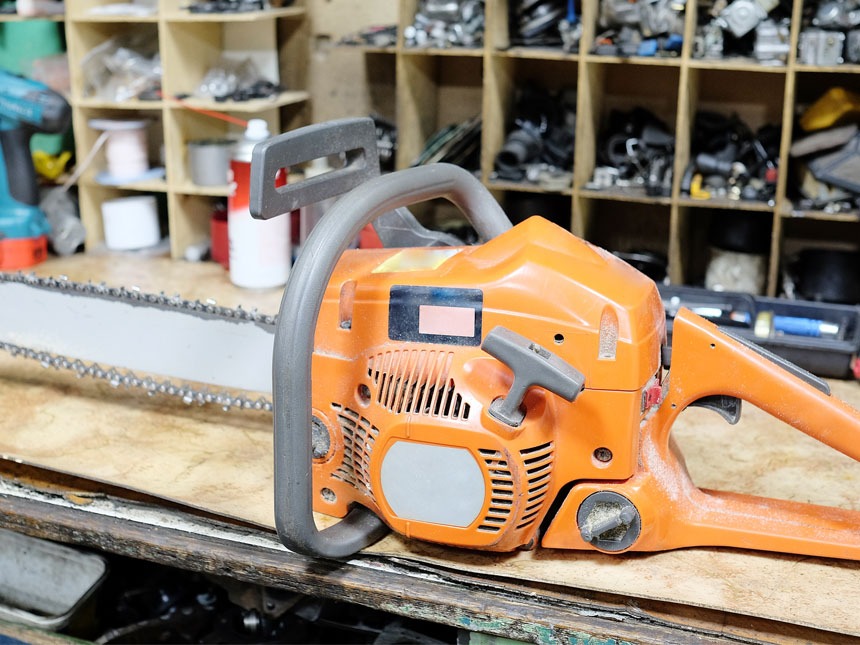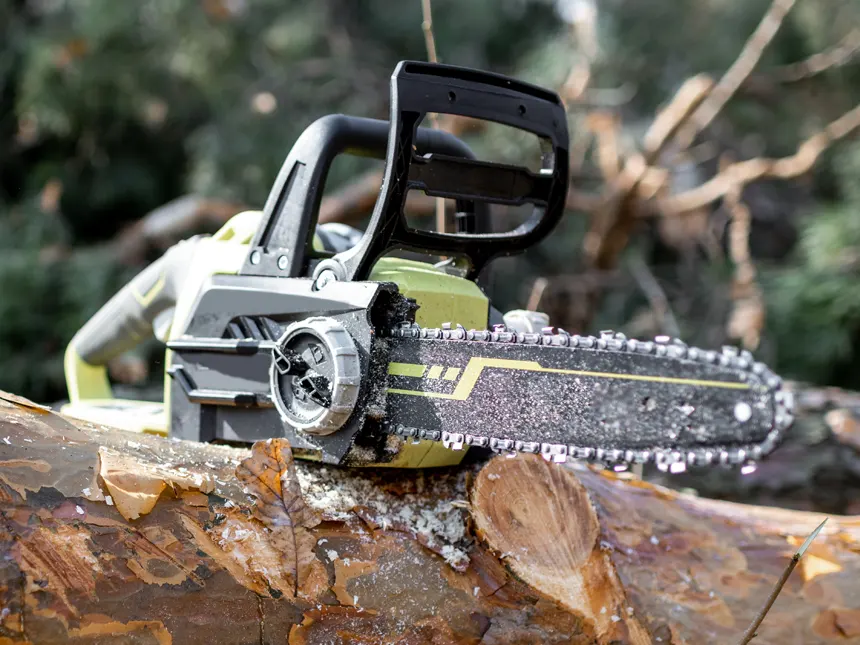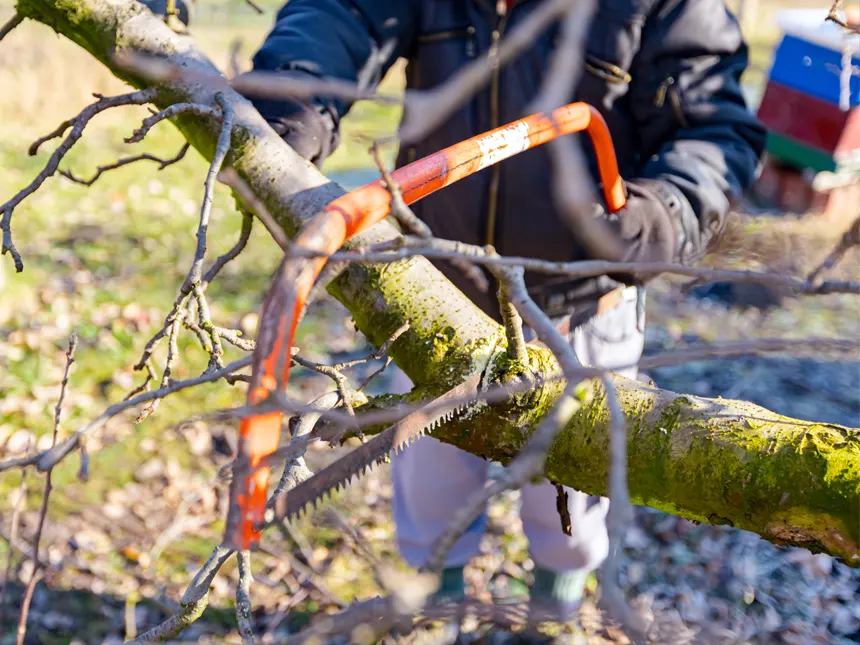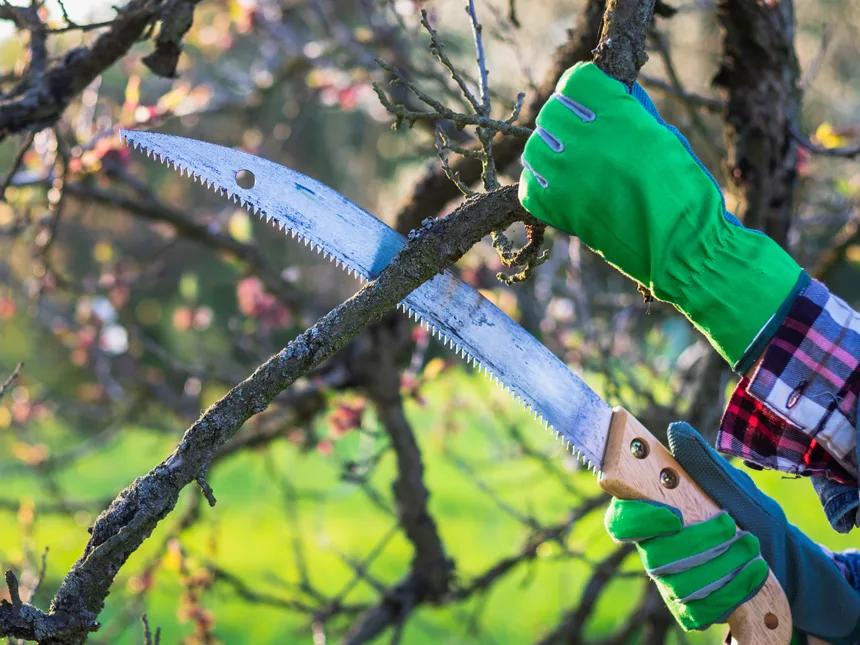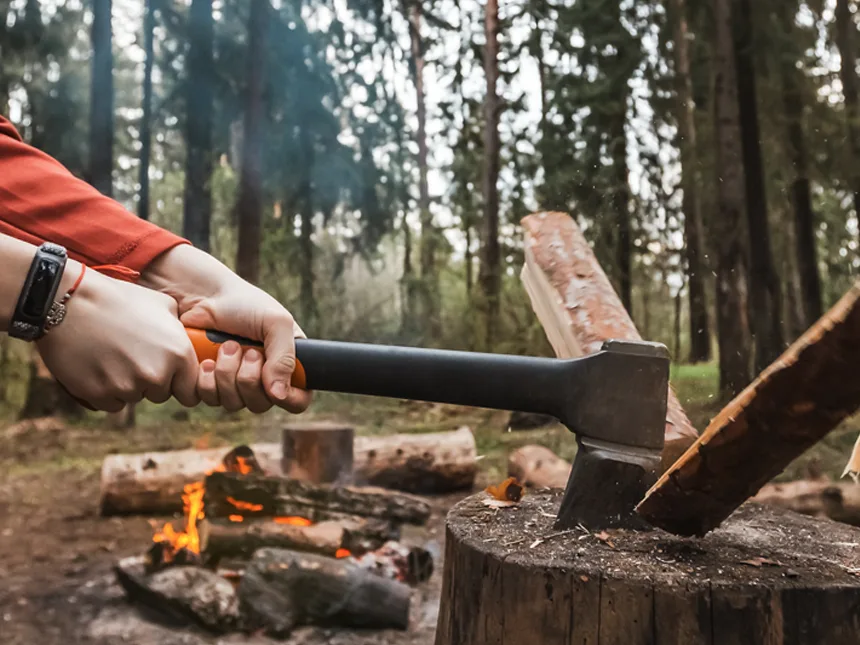5 Best Tools for Splitting Kindling
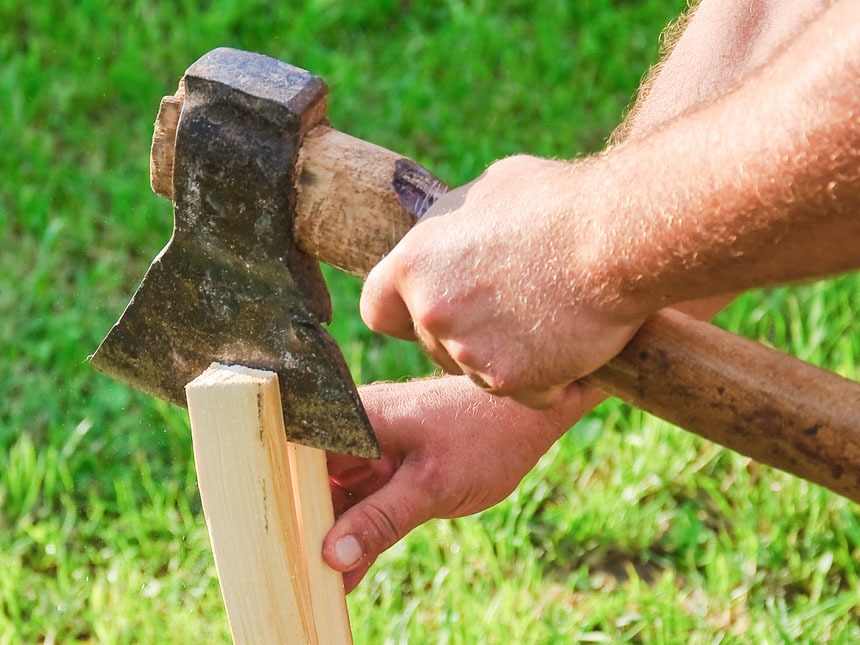
Timber Gadgets is reader-supported. We may earn a commission if you buy through the links on our site.
Kindling is important for getting a fire started, whether you’re out camping or using a wood-burning stove at home. For those of you heating your house with a fireplace, you know the struggle of always needing more kindling.
Making kindling is fairly straightforward but it can dangerous when using a hatchet. That’s precisely what this page is for. I’ll show you five different devices used to make kindling; most of which are pretty safe and easy to use.
Whether you’re old-fashioned and refuse to use anything besides a hatchet or you want the safest, easiest tool for making kindling, we’ve got you covered.
As you probably know already, splitting kindling is a dangerous task with a hatchet. And while a hatchet is one of the options on our list, we have four other tools for splitting kindling that are pure genius. The devices are listed below.
| Image | Length | Weight | Name |
|---|---|---|---|
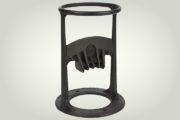 | 12″ | 10 lbs | Kindling Cracker |
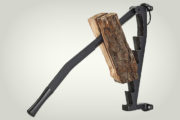 | 23″ | 10 lbs | Stikkan Kindling Maker |
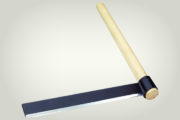 | 19.4″ | 3.3 lbs | Shingle Froe |
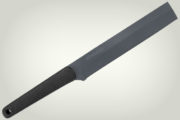 | 14.7″ | 1 lb | BTI Fixed Blade Froe |
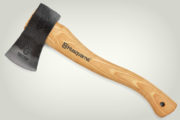 | 13″ | 2.2 lbs | Husqvarna Hatchet |
Table of Contents
How to Pick the Best Tool for Splitting Kindling
Choosing the correct tool for the job comes down to personal preference really. Many people prefer to use a hatchet while others are more concerned with safety. Or perhaps you want your kids to help but don’t feel comfortable letting them use an axe.
Whatever your case is, I’ll go over some things to consider before deciding which tool is best for you and your family.
- Safety
- Ease-of-Use
- Cost
Starting with safety, there are a few really good options out there. I should also mention that using a hatchet to split kindling can be dangerous but when done correctly, you greatly reduce the risk of harming yourself. I’ll explain more about that later.
Besides hatchets, there are some really clever tools to help you make kindling. All of these tools have sharp edges; there is no way around that. So they’re all mildly dangerous in that aspect but not as much as an axe. Either way, safety is definitely something to consider.
How easy the tool is to use is something else to consider. Everyone likes a simple tool; that’s what makes them so effective. While some people consider a hatchet difficult to use, others may not. So take a close look at the tools listed below and decide whether or not it’s something you and your family can handle.
The splitters on this list are below $100 with the exception of the first tool; it’s a little more expensive. Price is a factor for most people and definitely something to consider. Having said that, these devices are comparable to the price of a decent hatchet.
These three factors should help you decide which splitter is best for you. Remember, while the price is always important, so is safety. Spending an extra $50 is well worth the money if it saves you from a trip to the doctor because you accidentally chopped your hand with an axe.
Kindling Tools Reviewed
Each of these kindling splitters has its pros and cons but that can be said about everything. Please consider looking through all the devices listed before making a decision. Let’s get started…
Kindling Cracker
A for how it works? Well, you place the Kindling Cracker on a flat surface. Should you feel the need to bolt it to a bench, there are holes for you to do so.
Once ready, take a piece of firewood and place it into the circle, resting it on the sharp, axe-like piece of cast-iron metal in the middle. Now take a hammer and drive the wood down until it splits. Take each piece and repeat the process until you have as much kindling as you need.
Like I already said, this is my favorite device on the list. It comes highly recommended because it’s easy to use, made from cast iron, and only costs about $70. Perhaps the only drawback is the size.
The top ring is 6.5 inches in diameter which means you can only use logs small enough to fit. There is a bigger version but expect to pay a little more for it.
Stikkan Wall-Mounted Kindling Maker
I bet that’s the cheesiest video you’ll watch all day (lol). You get the point, though. This is Stikkan’s Wall-Mounted Kindling Maker. Bolt it to a wall, post, or tree and you can start making kindling in a few short minutes.
Stikkan is the Swedish company making this device. It was invented in Norway in 1982, according to their website. Since its creation, many companies have tried to recreate its simplicity but due to inferior material, they don’t outlast the Stikkan. A real Stikkan is made from cast iron.
Simply take a piece of firewood and place it on the bottom notch. Next, take the handle and firmly push it down until the wood begins to split. Once the handle is pushed down as far as it can go, lift the handle up and move the firewood to a higher notch. Continue this process until the wood splits into a nice piece of kindling.
You can buy these on Amazon for around $170. According to Stikkan’s website, there are two US-based retailers selling their product but it’s unclear whether or not those companies have a physical location or if they’re online retailers only. Either way, click the button below to see this device on Amazon.
Shingle Froe
It should go without saying but Shingle Froes is not used very often nowadays. At least for their intended purpose of making shingles. They’re great for kindling, though. Instead of swinging a blade, like a hatchet, you’re swinging a hammer. In the video above, a knotted log is used to pound the Shingle Froe but a rubber mallet will work also.
Place the cutting edge on top of the firewood and use your rubber mallet to drive the blade into the wood; keep hammering until the wood splits. Repeat the same process until you have enough kindling. You can buy these online or in some hardware stores for $40 – $60.
Schrade Fixed Blade Froe
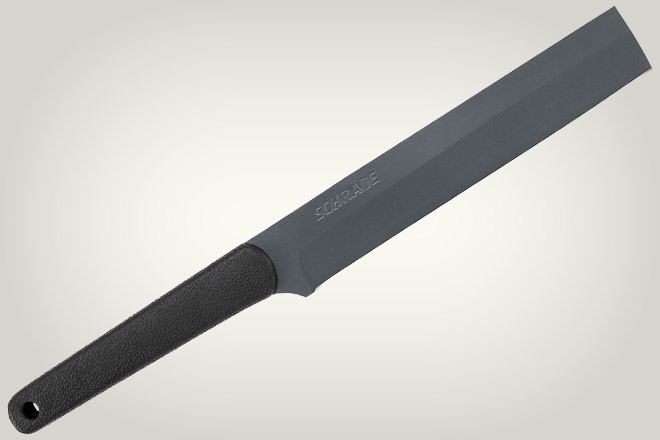
The Schrade Steel Blade Froe looks similar to a knife but it is used the same way a Shingle Froe is. The difference is the handle. For a traditional Shingle Froe, the handle sticks up, running parallel to the standing piece of firewood you’re splitting.
This one is the opposite, it’s used in the same way but the handle sticks out to the side. It’s easiest to transports, making it a better option for camping.
I won’t go into great details about this particular tool and how to use it because this information was basically covered in the Shinge Froe section. It is developed by Battenfeld Technologies, Inc’s “Shrade” brand and the overall length is 14.7 inches; the blade length of 8.5 inches. Its made from 1070 high-carbon steel and it comes with a polyester sheath with a leg strap. You can purchase them for around $30.
Hatchet
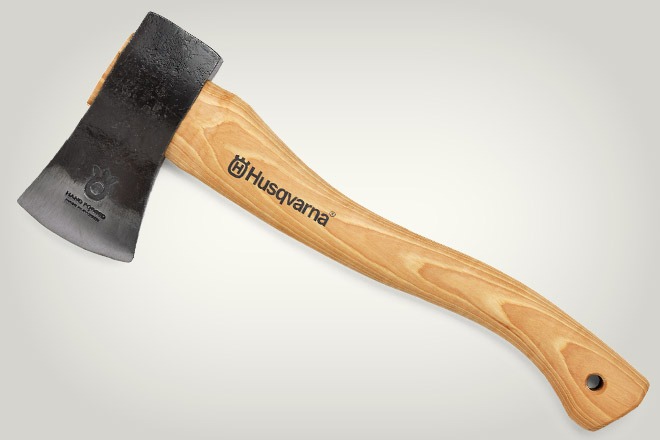
A list of tools for splitting kindling wouldn’t be complete without a hatchet; a hand axe. It’s without a doubt, the most used tool for the job but that doesn’t mean it’s the safest. Chances are, you’re here because you or someone you know cut themselves while using a hatchet to split kindling. It’s a common problem, whether you’re using it correctly or not, accidents are bound to happen.
Out of all the hatchets in the world, the one I’m listing here is the one I believe is the best hatchet for the money. That doesn’t mean it’s the best overall, the cheapest, the lightest, etc. What I mean is, I think you get an incredible value for the price.
They sport a hand-forged head with a decent-quality handle and they sell them for nearly half the price of other hand-forged axes. You can buy this hatchet, for example, for around $40 online.
For kindling, you don’t need the best hatchet in the world. A cheap $20 axe with a composite handle will last you a lifetime if you take care of it. That being said, spending a little more will get you one of the best hatchets you can buy.
How to Cut Kindling Safely
There are a few ways to split kindling safely, including using some of the devices listed above. When using a hatchet, however, things get tricky. Swinging the blade while holding a piece of firewood is dangerous. That much is obvious. In this section, I’ll go over one method used to split kindling safely with a hatchet.
So many people are splitting kindling the wrong way. They cautiously swing a hatchet with one hand while holding up the log with their other hand. Once the cutting edge is stuck in the end, they lift up the hatchet along with the firewood. The next step is to drive the log downward to finish splitting the wood in half. It’s logical, yes. Safe?
Well, more so than trying to split the log in one fell swoop. Swinging both the axe and the wood together greatly reduces the chance of hurting yourself because you no longer have to hold the log with your other hand. That’s great but there is an even better approach; a method to remove the chance of a glancing blow to your fingers.
Instead of standing your firewood vertically and chopping down on the end, lay the log horizontally on the ground; this way you don’t have to hold it with your hand. With the log laying horizontally, chop down towards the end of the firewood.
Once the hatchet is stuck into the wood, lift up both the hatchet and the wood and drive both of them down together. With enough force, the impact will split the log in half. This is one of the safest ways to cut kindling with a hatchet.
Another way to protect yourself is by using thick gloves. Some cheap cowhide leather gloves from your local department store will go a long way in protecting your hands.
Conclusion
Whether you’re looking for a traditional approach to making kindling or your main concern is safety, you have several devices to choose from. It all comes down to what is important to you.
At the beginning of this page, I mentioned three things to look for; safety, ease of use, and cost. In my opinion, the winner of safety and ease-of-use go to the Kindling Cracker and Stikkan’s wall-mounted kindling maker. The cost of the Kindling Cracker is much less but the cheapest overall is BTI’s Blade Froe.
My favorite is the Kindling Cracker. It’s a great product with an even better story behind it. One last piece of advice; you need a hammer for the Kindling Cracker and Froes. For the Shingle Froe and BTI Fixed Blade Froe, a hammer is used to strike the tool so I recommend using a rubber mallet. For the Kindling Cracker, you need a hammer to strike the wood.
In this case, use any hammer you want; something heavy will work best. I hope you enjoyed this page and found it useful! Please consider sharing with friends and family.

